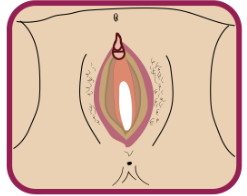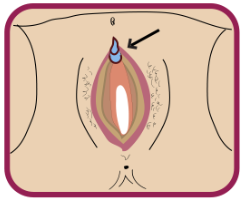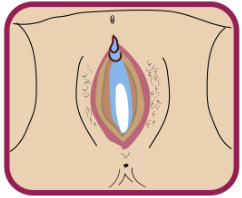What is FGM/C?
Female genital mutilation/cutting (FGM/C) refers to “any partial or total removal of the external female genitalia or any other injury to the female genital organs for non-medical reasons.” 1
The practice is not confined to any single region or religion. According to the latest data, more than 230 million girls and women alive today have been subjected to FGM/C worldwide, and the practice has been documented in at least 94 countries. 2 3
FGM/C predates Abrahamic religions and is not rooted in any single faith, despite widespread misconceptions. 3
In many communities, girls who are not cut may face social pressure, stigma, or diminished marriage prospects. 6
Different languages and cultures use varied terms to describe the procedure.
Most girls are cut between infancy and early adolescence. 1
When performed at an age when girls can remember it, the experience can have long-term effects on mental health.
International human-rights organizations have universally condemned FGM/C because it causes lifelong harm to women’s and girls’ physical, sexual, and psychological health. 1
Common short- and long-term complications include severe pain, infection, post-traumatic stress disorder (PTSD), chronic reproductive-tract infections, and complications during childbirth. 7
Types of FGM/C
No FGM/C
Type 1:
Clitoridectomy refers to the partial or total removal of the clitoris and/or the prepuce.
Type 2:
Excision is when the clitoris and/or the labia minora are removed.
Type 3:
Infibulation occurs when the vaginal opening is sealed by cutting and repositioning the labia minora and/or the labia majora, with or without the excision of the clitoris.
Type 4:
All other damaging procedures done to female genitalia for nonmedical reasons (e.g., pricking, piercing, incising, scraping, cauterization)
Prevalence of FGM/C
What is the U.S. law on FGM/C?
It is illegal under federal law to perform FGM/C or to transport a minor outside the United States for the purpose of FGM/C. The STOP FGM Act of 2020 (HR 6100) was enacted on January 5, 2021, significantly strengthening federal criminal penalties and closing legal gaps previously identified in federal court cases.8
Beyond federal protections, the majority of U.S. states now have specific laws criminalizing FGM/C, and Washington, D.C. enacted its own prohibition in 2022, establishing penalties for performing, assisting, or facilitating the practice.9
A survivor of FGM/C is not at fault and has not violated any U.S. laws.
If you or someone you know is feeling pressured by your community to have FGM/C, please reach out to a health care provider or call the Childhelp National Child Abuse hotline at 1-800-4-A-CHILD (1-800-422-4453) for child protective services agencies. You can also contact the Office of Women’s Health (U.S. Department of Health and Human Services) helpline at 1-800-994-9662.
Refer to our information factsheet for a general overview of FGM/C in the U.S. FGM/C Factsheet






